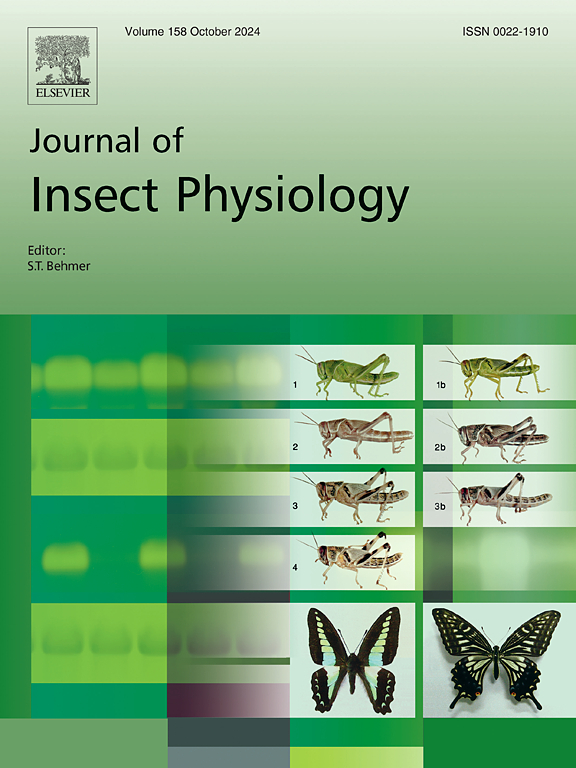Ultraviolet reflection in mayfly wings
IF 2.3
2区 农林科学
Q1 ENTOMOLOGY
引用次数: 0
Abstract
In the present study it is shown for the first time that the transparent membranous wings of mayflies (Ecdyonurus gr. venosus) can reflect UV light at both the imago and subimago stage. In the imago, reflectance spectra from male and female wings are significantly different with female wing reflection in the UV wavelengths higher than that of males. In the subimago the wing reflectance spectra of both sexes are similar and the intensity of reflection is lower compared to the imago. Higher UV reflection in female wings corresponds to wavelengths of the maximum sensitivity of male compound eye (recorded in other mayfly species), thus making wings a potentially important visual cue for recognition and mating. The UV reflection in the wing of E. gr. venosus is angle dependent, thus revealing its structural nature. Wax crystals in the form of rods in the wings of the imago have an important role in shaping the pattern of the reflectance spectra owing to their omnidirectional antireflection properties. This study can contribute to understand the role of UV light sensitivity as part of the integrated visual system of many animals, a research field so far disregarded owing to our anthropocentric dimension and to unravel the functional role of nanostructures of insect surfaces with special optical properties which can inspire new biomimetic surfaces.

蜉蝣翅膀上的紫外线反射。
本研究首次发现,蜉蝣(Ecdyonurus grs . venosus)透明膜状翅膀在象期和亚象期都能反射紫外线。在图像中,雄鸟和雌鸟翅膀的反射光谱有显著差异,雌鸟翅膀在紫外波段的反射高于雄鸟。在亚图像中,雌雄鸟的翅膀反射光谱相似,反射强度比图像低。雌性翅膀上较高的紫外线反射与雄性复眼的最大灵敏度波长相对应(在其他种类的蜉蝣中有记录),因此使翅膀成为识别和交配的潜在重要视觉线索。翅上的紫外线反射与角度有关,从而揭示了其结构性质。蜡晶体在图像翼部呈棒状,由于其全向抗反射特性,对形成反射光谱具有重要作用。这项研究有助于理解紫外光敏感性作为许多动物综合视觉系统的一部分所起的作用,这一研究领域由于我们以人类为中心的维度而迄今被忽视,并有助于揭示具有特殊光学性质的昆虫表面纳米结构的功能作用,从而激发新的仿生表面。
本文章由计算机程序翻译,如有差异,请以英文原文为准。
求助全文
约1分钟内获得全文
求助全文
来源期刊

Journal of insect physiology
生物-昆虫学
CiteScore
4.50
自引率
4.50%
发文量
77
审稿时长
57 days
期刊介绍:
All aspects of insect physiology are published in this journal which will also accept papers on the physiology of other arthropods, if the referees consider the work to be of general interest. The coverage includes endocrinology (in relation to moulting, reproduction and metabolism), pheromones, neurobiology (cellular, integrative and developmental), physiological pharmacology, nutrition (food selection, digestion and absorption), homeostasis, excretion, reproduction and behaviour. Papers covering functional genomics and molecular approaches to physiological problems will also be included. Communications on structure and applied entomology can be published if the subject matter has an explicit bearing on the physiology of arthropods. Review articles and novel method papers are also welcomed.
 求助内容:
求助内容: 应助结果提醒方式:
应助结果提醒方式:


